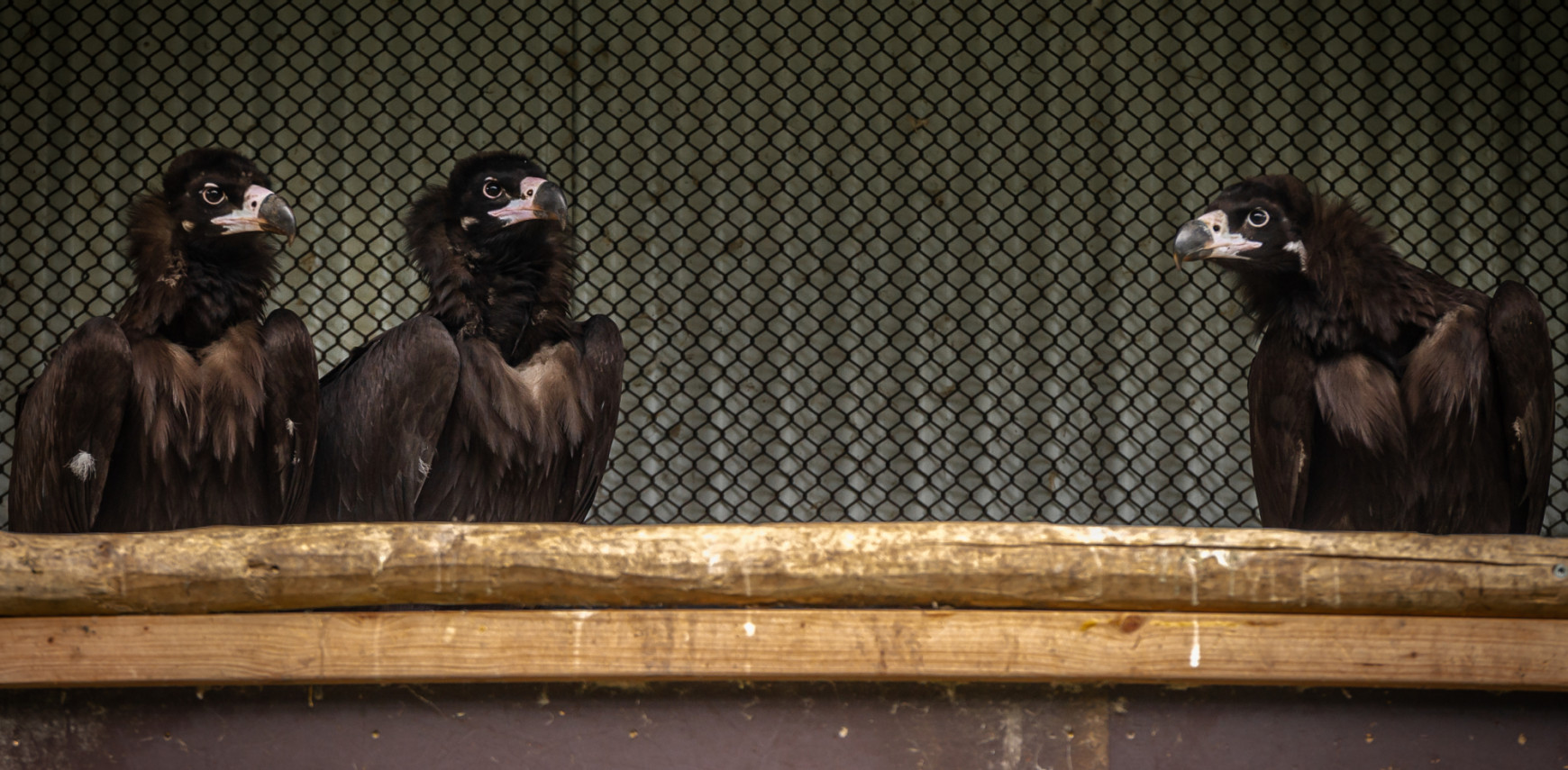How monitoring vulture welfare can improve their breeding success and conservation
The cinereous vulture (Aegypius monachus) is facing numerous threats in the wild, including habitat destruction, poisoning, and collisions with wind farms. Breeding centres play a vital role in the species' survival, as they produce young vultures for reintroduction into the wild. Good welfare influences the ability of cinereous vultures to successfully breed and raise offspring in breeding centres, which in turn affects the reintroduction success of the species to the wild.
How can we tell if vultures feel well in captivity?
A recent study at Zoo Planckendael explored how monitoring the behaviour and space use of cinereous vultures can provide insights into their welfare. By closely observing these factors, we can detect potential welfare concerns and take action to improve conditions. In our study we focused on two objectives: First, developing an "activity budget" to understand how vultures typically spend their time, and second, using behaviour observations and space-use analyses to detect any potential welfare concerns. An activity budget provides a breakdown of how an animal spends its time on different activities, such as feeding, resting, or moving around. This serves as a baseline, helping us spot any unusual behaviours that might indicate stress, discomfort, or health problems.
Using cameras, we observed 12 cinereous vultures throughout the breeding season, tracking both their activity budgets and how they used the space in their enclosure. This allowed us to identify both expected behavioural patterns and irregularities that could signal welfare concerns.
What did we find?
Some vultures showed behavioural irregularities, like excessive feeding or aggression. One even attempted to copulate with an object, a possible sign of frustration. Others avoided certain parts of their enclosure, possibly due to feeling unsafe near human activity. These findings highlight how subtle changes in behaviour and space use can serve as early indicators of welfare issues. By identifying and addressing these concerns proactively, we can improve conditions for captive vultures, ultimately supporting their reproductive success.
A new tool for zoos and conservationists
Our study demonstrates that monitoring behaviour and space use can be a practical, non-invasive method to assess the welfare of cinereous vultures in breeding centres. By regularly conducting such assessments, breeding centres can proactively identify and address welfare issues, improving the chances of breeding success. This ultimately contributes to the larger goal of conserving this species.
Curious for more?
Check this out! We published our full findings in the Journal of Applied Animal Welfare Science, in collaboration with Margarida Plácido and Oriol Tallo-Parra from the Universitat Autònoma de Barcelona. You can read the full article here!

